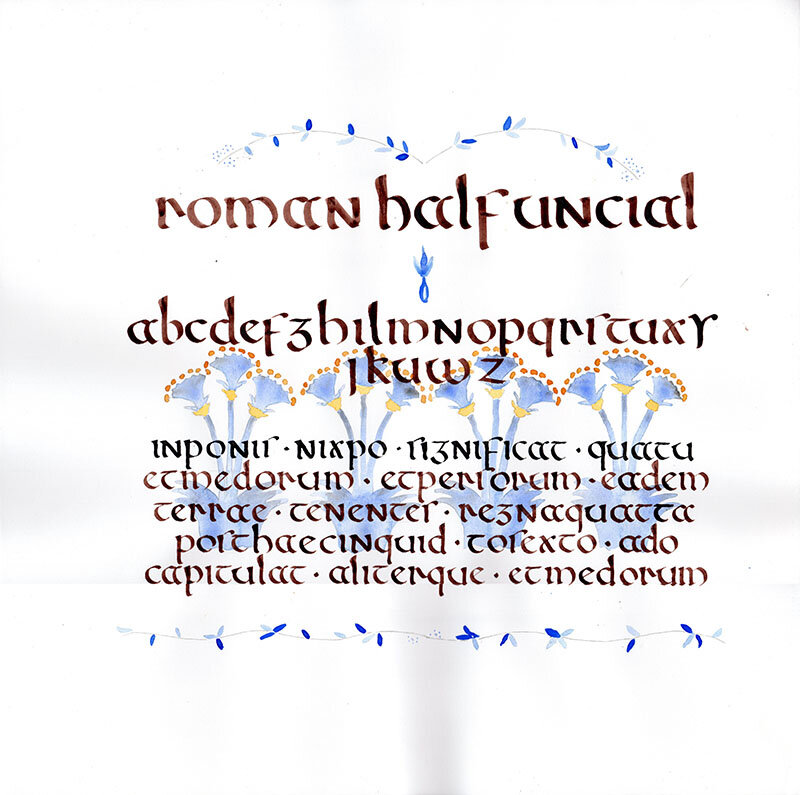Alphabet Pages - Roman Half-Uncial
Roman Half-Uncial letter form, Walnut and India Ink on Arches 90lb Hot Press Watercolor Paper
This alphabet, like the Roman Rustic alphabet, was developed and used as a simpler letter form that could be written quickly and in less space. It most likely was used for the routine paperwork of the day and for writing notes in the margins of manuscripts that used the more established Uncial alphabet. It can be called one of the first minuscle letter forms and was already established by the 4th century CE.
Essentials:
Letter size = 3 - 5 pen widths
Pen angle = 30°
Ascenders - for the letters B, D, H, L, (K)
Descenders - for the letters F, G, P, Q, (J)
Serifs for all downstrokes - standard serif for all downstrokes or the clubbed serif for the ascenders.
Numerous ligatures -found primarily at the end of a line when needed or within the text linking the letter E with the next letter.
This letter form was used from the 4th century through the 8th century, both in the western capital of the Roman Empire, Rome (before it fell to the Germanic tribes in the late 4th century), as well as the eastern capital of the Roman Empire, Byzantium. It is one of the first alphabets to be named a minuscule alphabet.
The borders and paintings are from walls found in excavated Roman villas. Romans used both frescoes and murals to decorate their walls. The flower-like image used here can also be found on vases using Egyptian hieroglyphics. Like the Rustic alphabet, Roman Half Uncial did not use all the letters that we use today. This is reflected in two lines of letters found in the middle of the alphabet page. The top line showing the letters that were used in the first millennium and the second line showing added letters for use today.
Roman Half Uncial alphabet
An interesting aspect of this alphabet are the letters G and S. With the shift from a majuscule letter form (Rustic, Uncial) to a minuscule letter form (Roman Half Uncial, Insular Half Uncial) to save space and time, these letters took on a shortened form. During the next few centuries, the majuscule letter form of the G and S began to creep back into the formation of these letters until they became standard in the alphabets of the 12th centuries and beyond that contained both an upper and lower case.
The text showing how the letters were used to form words were simple Latin words and can be found in several manuscripts of that time period.


